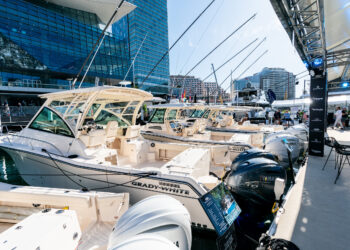NSW Maritime says it has fine tuned the state’s boating safety rules to make it simpler for people to understand when they are required to wear a lifejacket.
Office of Boating Safety and Maritime Affairs General Manager Howard Glenn said changes to the Marine Safety (General) Regulation follow new laws introduced in 2010 which required lifejackets to be worn in certain conditions and situations.
“There’s no single more important piece of safety equipment on board a boat than a lifejacket,” Mr Glenn said.
“The best safety practice is that everybody on board a small boat wears a lifejacket, but there are situations of heightened risk where the law actually requires one to be worn.”
“We’ve listened to ideas for fine tuning these laws which were introduced in 2010, and made some clarifications.”
The main changes to the regulations include:
- Pejar Dam near Goulburn and the Yass River are now confirmed as “alpine waters”
- people on board vessels on alpine waters may now wear any type of lifejacket
- removing the exemption from wearing a lifejacket which previously applied to surf skis, which now come under the requirements for canoes and kayaks
- requiring people aboard vessels less than 4.8 metres to wear lifejackets at all times between sunset and sunrise
- requiring canoeists and kayakers to wear lifejackets at all times when on white water
- clarifying that inflatable lifejackets that have been purchased or acquired new less than 12 months ago are considered to be appropriate, regardless of when they were manufactured
- amending an existing clause that requires a person to wear a lifejacket if he or she is boating alone in a small vessel without emergency assistance, to allow the company of a young person to qualify as emergency assistance if the young person is the holder of a boating licence
- increases safety requirements for divers with improvements to the display of dive flags, including that the flags must be in good condition and may be displayed on a nearby buoy
With the new changes, the law now requires lifejackets to be worn:
- by children less than 12 years old at all times when aboard a vessel less than 4.8 metres long and when aboard a vessel less than 8 metres long which is underway
- by all occupants of a vessel less than 4.8 metres long between sunset and sunrise, in open or alpine waters, when boating alone or when being used to transport goods/people more than 200 metres from shore
- by anyone being towed, including waterskiing, wakeboarding or parasailing and those being towed on tubes, sea biscuits or similar towable devices
- by anyone aboard a canoe or kayak when more than 100 metres from shore or on open or white water
- by a person kitesurfing alone more than 400 metres from shore
- when in an off-the-beach sailing vessel in open waters
- in certain situations of heightened risk including, but not limited to bad weather and crossing bars
- by anyone at any time when directed by the skipper
“Boating Safety Officers carry out random inspections of recreational and commercial vessels across NSW waterways,” Mr Glenn said.
“Their role is primarily education and safety, but they do have enforcement powers and penalties apply for non-compliance.”
For more information about lifejacket safety visit lifejacketwearit.com.au.

















